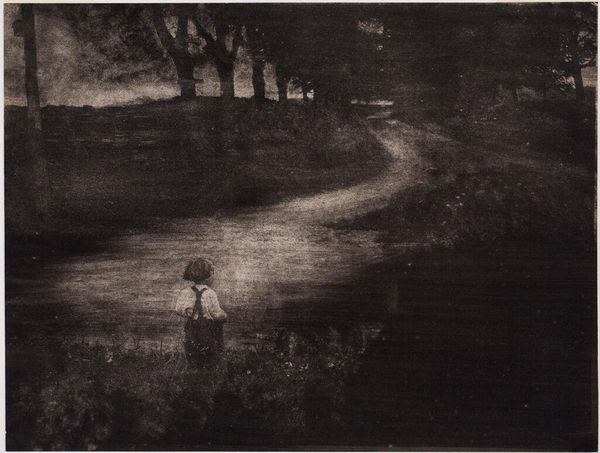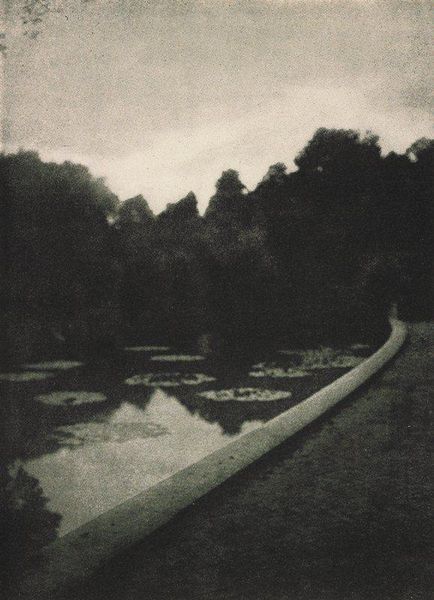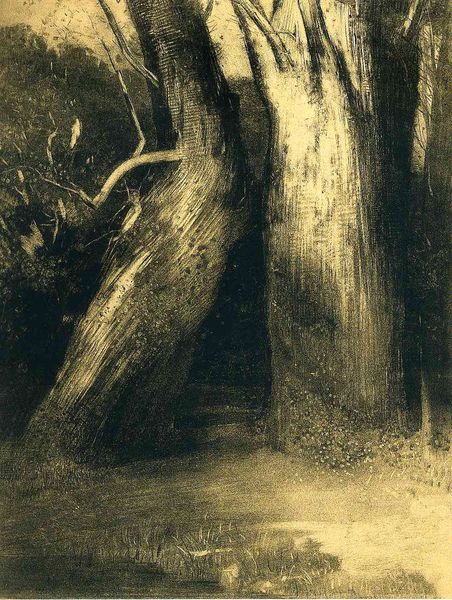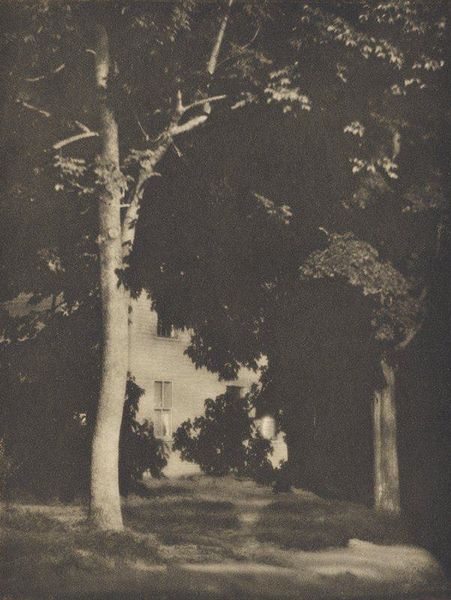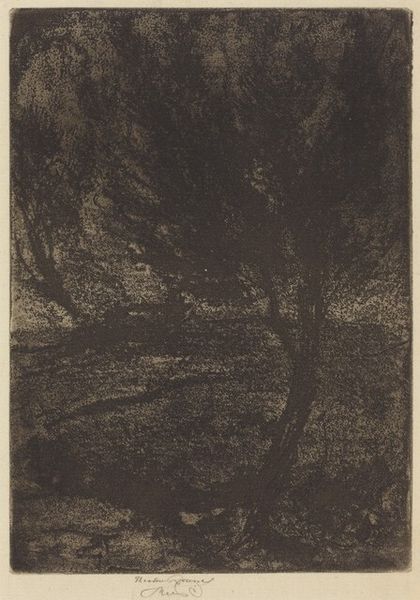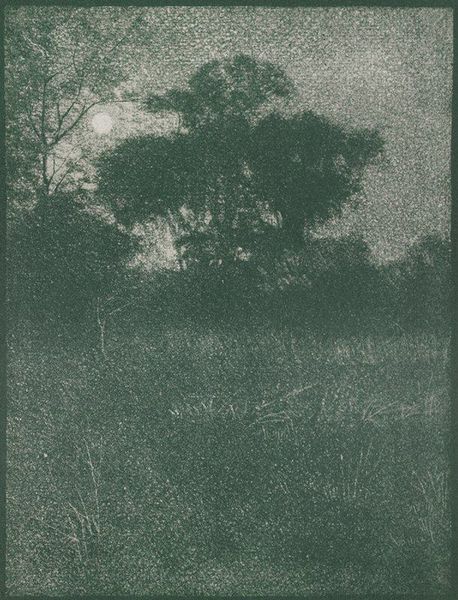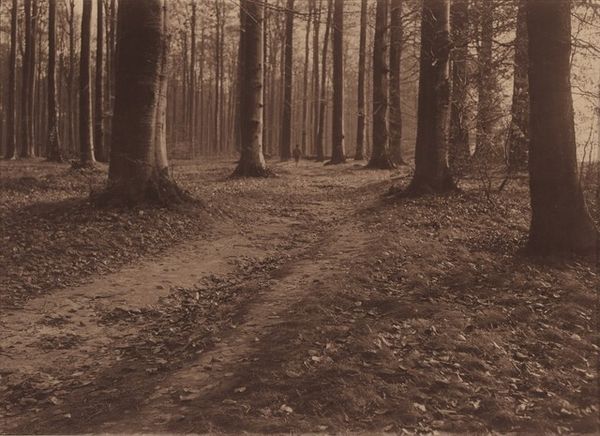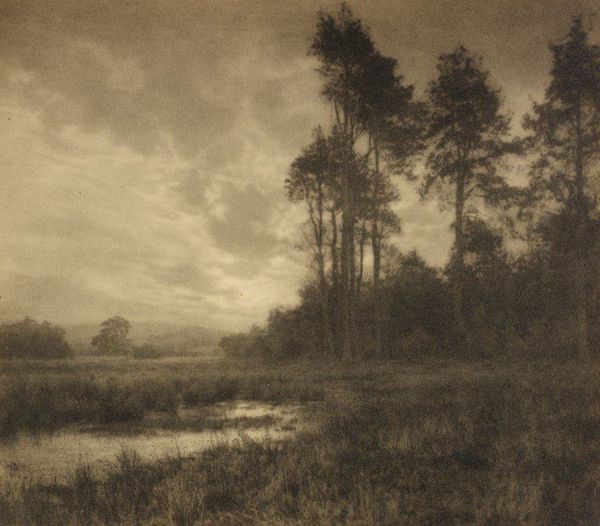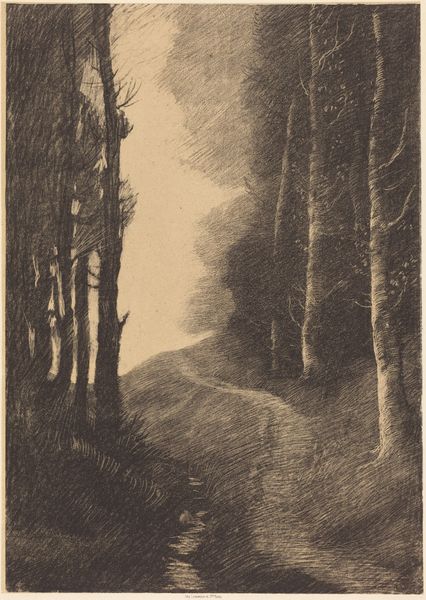
photography, gelatin-silver-print
#
tree
#
sky
#
monochromatic
#
pictorialism
#
landscape
#
photography
#
gelatin-silver-print
#
monochrome photography
#
symbolism
#
monochrome
Copyright: Public domain
Editor: Heinrich Kuhn's "Crépuscule," made in 1897 using the gelatin-silver print method, really strikes me. The soft, almost hazy quality creates such a serene and melancholic atmosphere. What’s your take on it? Curator: From a materialist perspective, consider the gelatin-silver print. It wasn’t just a neutral tool; it was part of a specific industrialized system of photographic production and consumption. Kuhn, by embracing and manipulating this material, actively engaged with those processes. What does the deliberate manipulation of this industrial material suggest to you? Editor: That's a great point. I guess it means he wasn't simply capturing a scene, but was shaping and crafting the photograph with the materials at hand, like a painter with oils. Almost fighting against the mechanization? Curator: Exactly! Think about the darkroom processes—the dodging and burning, the selective development. These techniques are not merely aesthetic choices but physical interventions in the photographic material. We're looking at a hand-crafted object made using industrialized materials. How does that intersection complicate our understanding of photography as purely objective? Editor: It makes me think about the labor involved. The hours spent in the darkroom transforming a negative. It highlights photography as a constructed image rather than just a recorded reality, like paintings, but with other means of production. Curator: Precisely! It elevates the role of the photographer from a recorder to a maker, a manipulator of materials. Understanding this interplay between material and process can really shift how we interpret even seemingly simple landscape photographs like this one. Editor: This has made me completely rethink how I see the photograph. Focusing on the materials and process adds a layer of understanding beyond just the visual representation. Curator: Indeed. Considering the materials allows us to explore the context of artistic production and how artists like Kuhn positioned themselves within industrial society.
Comments
No comments
Be the first to comment and join the conversation on the ultimate creative platform.
